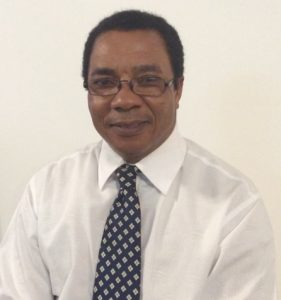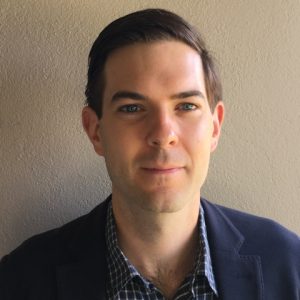Paste 2024
26th International Conference on Paste, Thickened and Filtered Tailings
16–18 April 2024 | Pullman Melbourne on the Park, Melbourne, Australia
Keynote Speaker

Dr Nelson Amoah
Western Australian Operations Manager
ATC Williams
Nelson is a technical and operations leader in multidisciplinary environments with over 30 years’ experience in major project management, civil, geotechnical, process and non-process infrastructure design, tailings dam engineering and mine closure. A versatile engineer, Nelson draws on global experience in the resources sector across commodities such as gold, copper, nickel, bauxite/alumina, hematite and magnetite iron and lithium.
He has worked in engineering consulting, mine development and operations management in Africa, North America, Australia, Asia, and New Zealand. Nelson has played leading roles in the development of very large tailings facilities globally and achieved significant expertise in conventional and non-conventional tailings engineering from planning, design, construction, operations management, governance, and closure.
Highly regarded as a global technical leader in the field of filtered tailings stacking (commonly referred to as dry stacking), Nelson spent 10 years at Karara Mining in the design and operations management of the first major magnetite mining and processing operation in Australia. A novel part of this operation is the large-scale tailings filtration and stacking of filtered tailings (non-conventional tailings) which is currently the largest in the world in terms of tailings quantities filtered and stacked (>30,000 t/day). He led pioneering research, investigations, planning, engineering design, installation of tailings dewatering and material handling, and operations management of this novel tailings stacking facility. He has contributed to several technical forums and short courses on tailings filtration and stacking over the past decade.
He has worked for major asset owners including Tianqi Lithium Energy Australia, Karara Mining, Newmont Mining, BHP, and major consulting engineering companies including Lycopodium and GHD. He joined ATC Williams in November 2023 as Western Australia operations manager.
He is a fellow of Institution of Engineers Australia, a chartered professional engineer, and member of American Society of Civil Engineers. Nelson holds a bachelor’s degree (Ghana), master’s degree and PhD (Canada) and MBA (Australia).
Presentation title: The place for filtered tailings and stacking in the search for safe and sustainable tailings management
Abstract:
Tailings dam failures have become a tragic part of the mineral processing industry, and the last decade has witnessed dam failure events (mostly upstream raised) that have shaken the global community due to the number of human lives lost and the scale of environmental destruction. The amount of water in the tailings material deposited and in the tailings storage facilities during operation – in combination with improper operations management of tailings water – have contributed to tailings dam failures.
The risks associated with slurry deposited tailings in conventional tailings dams have generated intensive debate and interest in improved and alternative methods of managing tailings such as dewatered (thickened paste and filtered) tailings for safe and sustainable tailings management. However, the transition to low water content tailings such as filtered tailings (commonly termed dry) continue to be challenged by uncertainties and misunderstandings on the issues and benefits in terms of feasibility, engineering performance, scale of operation, cost effectiveness etc. The debate on filtered tailings and stacking exists in both mining businesses and tailings technical community.
To contribute to the debate, the paper discusses practical insights obtained from the development of the largest filtered tailings storage facility, from dewatering processes of thickening and filtration, material handling and disposal and operation management of the filtered tailings storage facility. Key learnings in the design process, performance criteria, in situ behaviour of the filtered tailings, facility operational control requirements, cost effectiveness and some critical success factors are discussed.
Opening Speaker

Sue Mills
Manager Technical Services
BHP
Sue is currently manager technical services with BHP supporting the South Australian Copper Tailing assets. She is a process engineering professional with over 20 years’ industry experience in the mining sector, possessing a diverse processing background. As an advocate for the key principles of operational excellence, Sue focuses on her teams adding value, and enjoys leading both functional and execution teams. She has key strengths in stakeholder engagement, risk ownership and operational readiness.
Sue holds a bachelor’s degree in materials science and manufacturing engineering from the University of Queensland, and postgraduate degrees in metallurgy and project management and is a fellow of the AusIMM.
Invited Speakers

Dr Jarrad Coffey
Manager Tailings and Dams
Rio Tinto
Jarrad has been involved with tailings management at Rio Tinto for the past 13 years, with responsibilities spanning technical support and leadership of long-term planning, projects and operations. For several years, Jarrad has developed and lead the governance and risk management programs of Rio Tinto Iron Ore’s tailings and dams assets. Some highlights of this work are the development and leadership of an integrated tailings community, dedicated tailings management and studies teams, and a comprehensive tailings management system.
Co-speaker: Michael O’Neill, Principal Tailings Studies, Rio Tinto
Presentation title: Finding the balance in the tailings storage facility design and selection process
Abstract:
Expectations relating to the safety and sustainability of tailings storage facilities (TSFs) continue to grow, especially as many mining companies implement the Global Industry Standard on Tailings Management. The process of selecting a site and design for a TSF is complex and extends well beyond technical and financial considerations into matters of risk and social acceptance. Technology continues to advance rapidly, adding even more possibilities to consider. Decision-making related to TSFs now requires endorsement from senior personnel in a mining company, which adds the challenge of reliably communicating and with most companies engaging an external engineer of record, this frequently extends to external parties. This presentation will explore all of the various inputs and complexities associated with selecting a TSF option to invest in and detail a strategy recently adopted in practice.

Dr Heather Kaminsky
NSERC IRCC in Oil Sands Tailings Management
Northern Alberta Institute of Technology, Canada
Heather is the Natural Sciences and Engineering Research Council of Canada Industrial Research Chair for Colleges in Oil Sands Tailings Management, joining the Northern Alberta Institute of Technology after tenure at Suncor Energy and Total E&P Canada in tailings technology development. Her specialty in fundamental structures of clay and heavy minerals in oil sands has enhanced her work in advanced ore characterisation, bitumen extraction, tailings, materials wear and corrosion, water treatment, water chemistry modelling and waste valorisation.
Heather has a passion for clays and tailings and hopes to play a key role in solving tailings as an issue for the oil sands industry. Heather was recently recognised by SHEInnovates as one of the women advancing innovation in Alberta.
Presentation title: Clays and tailings: how the nanoscale controls the macroscale
Abstract:
Clays have long been recognised as problematic in tailings processes and foundation design, but few people truly understand clays and how they behave in tailings processes and deposit. This presentation will walk through what we know about these particles and how their nanoscale behavior dramatically influences macroscale performance. Specifically, this talk will cover:
- Why clays cause issues in solid liquid separation (e.g. tailings processing and creation of paste).
- The consequences of these issues on the volumes of tailings produced and why this leads to geotechnical operational emergencies.
- Challenges of clay rich tailings at closure.
- How to detect the potential for these issues by characterising your ore and reviewing process data from bench scale tests.
